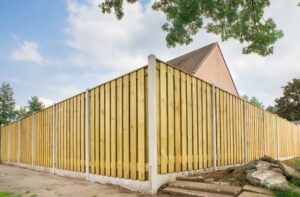Demographics of Lee’s Summit, Missouri
Lee’s Summit is a city located in Jackson County and Cass County, Missouri. As of the 2020 census, the population of Lee’s Summit was 101,108, making it the sixth-largest city in Missouri.
Lee’s Summit has seen steady population growth over the past few decades. Between 2000 and 2010, the population grew by over 50%. Much of this growth can be attributed to the city’s convenient location near Kansas City and affordable housing.
The demographic makeup of Lee’s Summit is predominantly white, middle-class families. The median household income is above the national average, and nearly 40% of adults hold a bachelor’s degree or higher. While largely a residential community, Lee’s Summit does contain a vibrant downtown area and is home to a number of large employers.
Below is a deeper look at the key demographic categories in Lee’s Summit:
Population
- The population of Lee’s Summit was 101,108 at the 2020 US Census. This is a significant increase from the 2000 population of 70,700.
- Lee’s Summit ranked as the 6th largest city in Missouri as of 2020.
- The city has a population density of 1,500 people per square mile.
- Lee’s Summit’s growth rate from 2010 to 2020 was 10.5%. This is lower than the 15.3% growth rate from 2000 to 2010.
- The city encompasses 66.59 square miles of land.
- Lee’s Summit is part of the Kansas City metropolitan area, which had a population of 2.1 million in 2020.
Age & Sex
- The median age in Lee’s Summit is 36.8 years old. This is slightly higher than the US median age of 38.5 years.
- 24.4% of the population is under 18 years old. This compares to 22.3% nationally.
- 12.7% of the population is over 65 years old. Nationally, 16.5% of the population is over 65.
- There are slightly more females than males in Lee’s Summit. The female population is 51.3%, while the male population is 48.7%.
Racial Makeup
- 80.7% of Lee’s Summit residents identify as white. This is lower than the national average of 76.3% white.
- 9.4% of residents identify as Black or African American. Nationally, this demographic makes up 13.4% of the population.
- 5.3% of residents identify as Hispanic or Latino. This compares to 18.5% nationally.
- 3.4% of Lee’s Summit residents are Asian. This is nearly double the national average of 5.9%.
- 0.3% of residents identify as Native American. This is lower than the national average of 1.3%.
- 2.4% identify as two or more races.
Household Types
- There are 37,285 households in Lee’s Summit.
- 67% of households are family households. This compares to 65.5% nationally.
- 28% of households contain individuals living alone. Nationally, this share is 28.4%
- The average household size in Lee’s Summit is 2.58 people. This is slightly higher than the national average of 2.53.
- 5.4% of households contain a single mother with children. Nationally, this share is 7.8%.
- The city has a relatively low share of non-family households at 33%. This includes people living alone or with roommates.
Education
- 91.7% of adult residents (age 25+) have a high school degree or higher. This compares to 88% nationwide.
- 39.2% of adults hold a bachelor’s degree or higher. Nationally, this share is 32.1%.
- Among residents age 18-24, 11.7% are not high school graduates. Nationally, this share is 9.6% for this age group.
- The Lee’s Summit R-7 School District serves most of the city. It has a total enrollment of about 18,000 students in K-12.
- The school district operates 16 elementary schools, 4 middle schools, 3 high schools, and 1 alternative high school/middle school.
- The district has high graduation rates, with 94.5% of students graduating on time in 2019. test scores also tend to be higher than state averages.
Income & Poverty
- The median household income in Lee’s Summit is $80,338. This is significantly higher than the national median of $62,843.
- Just 5.1% of families live below the poverty line. This compares to 9.2% of families nationwide.
- Per capita income is $35,688 in Lee’s Summit. Nationally, per capita income is $34,103.
- 85% of households earn $50,000 or more annually.
- Only 2.2% of households earn less than $15,000 per year. This suggests there is less poverty compared to other cities.
Housing
- The median home value in Lee’s Summit is $235,500. This has increased steadily from $185,800 in 2010.
- 63% of housing units are owner-occupied. The other 37% are rented.
- 79% of occupied housing was built after 1970. So the housing stock is relatively newer compared to other cities.
- Only 3% of occupied housing was built before 1940.
- New home construction has averaged about 400 units per year since 2010.
- The median rent is $1,016 per month. This has increased from $833 in 2010.
Employment
- The top industries in Lee’s Summit are:
- Education (13%)
- Retail trade (12%)
- Health care (11%)
- Manufacturing (9.5%)
- Construction (6.4%)
- 72% of residents work outside the city, mostly commuting to Kansas City.
- Only 3.3% of workers use public transportation. Most commute by car, with a mean travel time of 24 minutes.
- The unemployment rate as of October 2022 was 2.0%, lower than the national rate of 3.4%.
- Major employers in Lee’s Summit include:
- Lee’s Summit R-7 School District
- Summit Technology Academy
- City of Lee’s Summit
- BMC Manufacturing
- Walmart Supercenter
- Missouri Department of Transportation
Key Demographic Trends
Some of the key demographic trends shaping Lee’s Summit include:
- Continued population growth, fueled by the city’s affordability and location near Kansas City. However, growth is slowing compared to the early 2000s.
- An aging population, with the share of seniors expected to grow faster than other age groups.
- More diversity, especially in the Asian and Hispanic/Latino populations. However, the city remains predominantly white.
- A shift to more rental housing. Homeownership rates are declining while rents are rising.
- High education rates and incomes relative to state and national benchmarks. This is attracting more professional and technical workers.
- Low unemployment and a strong regional economy supporting continued job and wage growth for residents.
Demographic Challenges
Despite the positives, Lee’s Summit faces some key demographic headwinds:
- Below average diversity and rapidly growing Asian/Hispanic populations suggest a need for greater cultural competence.
- Income inequality could increase given the mix of low-wage retail jobs and highly paid tech/professional roles.
- Housing affordability may decline as rents and home values outpace incomes. This could displace some lower-income residents.
- Declining household sizes and aging boomers will necessitate modifications to housing, transportation, and amenities.
- Attracting and retaining young professionals will be key to supporting a skilled workforce and the tax base.
Conclusion
In summary, Lee’s Summit has experienced rapid transformation from a small farming community into one of Missouri’s largest suburbs. The city has an educated, affluent population and a strong job market. However, demographic changes in the coming decades will require proactive planning around housing, infrastructure, and social services. Maintaining affordability and inclusion for all residents will allow Lee’s Summit to build on its advantages as a highly desirable community in the Greater Kansas City region.
Hours
Monday: 9:00 AM – 5:00 PM
Tuesday: 9:00 AM – 5:00 PM
Wednesday: 9:00 AM – 5:00 PM
Thursday: 9:00 AM – 5:00 PM
Friday: 9:00 AM – 5:00 PM
Saturday: 9:00 AM – 5:00 PM
Sunday: 9:00 AM – 5:00 PM
Service Areas
Downtown Lees Summit (64063)
New Longview (64081)
Lakewood (64064)
Raintree Lake (64082)
Legacy Wood (64086)
Highland Meadows (64063)
Eagle Creek (64086)
Pryor Meadows (64082)
Winterset Park (64081)
Woodland Shores (64082)
Summit View Farms (64086)
Belmont Farms (64086)
Windsor Station (64081)
Eagle Creek Estates (64086)
Bridgehampton (64064)
Chapel Ridge (64063)
Bent Tree Bluff (64081)
Park Ridge (64081)
Strother Ridge (64082)
Deerbrook (64086)
Kansas City
Blue Spring
Grain Valley
Contact Us.
Get Solutions For All Fencing Services
Every day from
9:00 — 5:00
Call to ask any question





